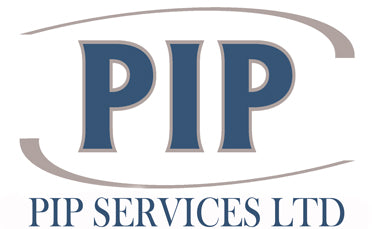Manual handling is an everyday activity in the construction industry such as lifting bricks, carrying timber, shifting bags of cement, or loading materials onto scaffolds. But when done incorrectly, it can result in serious musculoskeletal injuries that affect workers’ health, productivity, and quality of life.
According to the Health and Safety Executive (HSE), manual handling injuries account for over a third of all workplace injuries in the UK construction sector. These injuries are not just painful; they’re costly to both employers and employees.
In this blog post, we explore safe manual handling techniques specific to construction work in the UK and how workers and employers can collaborate to minimise risks.
What is Manual Handling?
Manual handling involves transporting or supporting a load by hand or bodily force. This includes lifting, lowering, pushing, pulling, carrying, or moving items. In construction, loads are often awkward, heavy, or unstable; increasing the risk of injury when handled improperly.
Common Injuries from Poor Manual Handling
Injuries typically involve the:
- Back (especially lower back strain or herniated discs).
- Shoulders and neck.
- Arms and wrists.
- Knees and legs.
These injuries often develop over time due to repetitive strain or improper technique, but they can also result from a single incident.
UK Legal Requirements: The Manual Handling Operations Regulations 1992
Employers in the UK have a legal duty under the Manual Handling Operations Regulations 1992 (MHOR) to:
- Avoid hazardous manual handling where possible.
- Assess the risk of injury from any unavoidable manual handling.
- Reduce the risk of injury so far as is reasonably practicable.
This regulation is enforced by the HSE and applies to all construction sites, whether domestic or commercial.
Key Manual Handling Techniques to Prevent Injury
Here are some practical, HSE-aligned manual handling techniques and best practices that can significantly reduce the risk of injury on UK construction sites:
1. Plan the Lift
- Assess the weight, shape, and size of the load.
- Check the path is clear of obstructions, trip hazards, or uneven surfaces.
- Consider using mechanical aids like wheelbarrows, pallet trucks, or hoists where appropriate.
2. Use the Right Posture
- Stand close to the load with feet shoulder-width apart.
- Bend your knees, not your back.
- Keep your back straight and your head up.
- Grip the load firmly with both hands.
- Lift using the strength of your legs.
3. Avoid Twisting
- Turn using your feet, not your spine.
- Keep the load close to your body.
- If you need to change direction, pivot from your feet instead of twisting your torso.
4. Team Lifting
- When the load is too heavy or awkward for one person, coordinate with a partner.
- Assign roles: one person leads the lift and gives commands.
- Lift and lower in unison to avoid imbalance or strain.
5. Break Up Loads Where Possible
- Split loads into smaller, more manageable parts.
- Use containers with handles or distribute weight evenly.
6. Take Regular Breaks
- Repetitive lifting can lead to fatigue and poor technique.
- Schedule rest periods and rotate tasks to reduce strain on specific muscle groups.
Mechanical Aids and Technological Solutions
The UK construction industry has increasingly embraced mechanisation to reduce manual handling risks. Some examples include:
- Material hoists and cranes.
- Powered wheelbarrows and trolleys.
- Vacuum lifters for glass or panels.
- Brick elevators.
Investing in these tools may have an upfront cost, but they pay off by reducing injuries, improving productivity, and demonstrating compliance with HSE guidelines.
Training and Awareness
Manual handling training is essential. In the UK, employers must ensure that all workers involved in manual handling are adequately trained. Training should include:
- Correct lifting techniques.
- Recognising hazardous loads
- Using mechanical aids.
- Risk assessment principles.
Courses such as the CITB Health and Safety Awareness or Manual Handling Awareness training are widely available and often required for site access.
Creating a Manual Handling Risk Assessment
A proper risk assessment should include:
- Task: What is being done?
- Individual: Are they physically capable?
- Load: How heavy or awkward is it?
- Environment: Is the path clear? Is the lighting sufficient?
The TILE acronym (Task, Individual, Load, Environment) is commonly used across UK sites to evaluate manual handling risks.
Conclusion
Manual handling remains one of the leading causes of injury in the UK construction industry, but it doesn’t have to be. By following proper techniques, using mechanical aids, and fostering a culture of safety through training and communication, construction firms can significantly reduce the risk of injury.
Prioritising manual handling safety is not just about compliance, it’s about protecting workers’ livelihoods and building a safer, more sustainable industry for everyone involved.
Why choose PIP Services for your health and safety consultancy?
We’re dedicated to providing the highest level of advice on all Health and Safety related matters and will assist companies in meeting their obligations. We offer a wide range of Health & Safety Services for a variety of clients. We represent many companies and deal with all of their Health & Safety matters.
We’re also an accredited CITB, NEBOSH, IOSH, IWFM & CITB training provider, as well as a ProQual-approved NVQ centre.
We are rated 4.9/5 on Trustpilot, and you can read our reviews here. If you would like to speak to us about your training needs, please get in touch using the button below.

